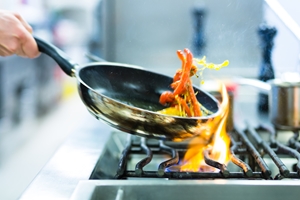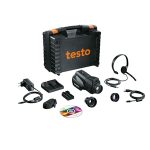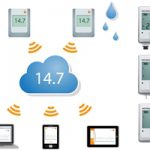Dining out is a growing custom among Australians. According to IBISWorld, the restaurant sector has grown at a compound annual growth rate of 4.3 per cent between 2011 and 2015.
If you’re thinking of joining this burgeoning industry, you should be aware of the stringent food safety requirements you’re obligated to follow, such as controlling food temperatures across operations.
Food safety first! Everything you need to know about Australia’s safe food system: https://t.co/UmXLO13CTG
— FoodStandardsAusNZ (@FSANZnews) December 12, 2015
The basics of temperature control
At first glance, temperature doesn’t seem that critical. However, Food Standards Australia New Zealand developed an entire document that outlines the fundamentals of this issue.
As per Australian and New Zealand law, you’re required to keep potentially hazardous foods at temperatures at a maximum of 5 degrees Celsius or minimum of 60 degrees Celsius. That means any products which could pose dangers to your guests should not be stored or served at temperatures between 6 degrees Celsius and 59 degrees Celsius.
What is a “potentially hazardous food”? Food Standards Australia New Zealand defined such products as those which need to “be kept at certain temperatures to minimise multiplication of any food-poisoning bacteria that may be present in the food or to prevent the formation of toxins in the food”. The authority provided a list of such products:
- Raw and cooked meats or edibles that contain meat (casseroles, lasagna, curries, etc.).
- Dairy products such as custards, milk and some desserts.
- Seafood (which does not include fish that are served live).
- Any processed produce.
- Cooked rice and pasta.
- Products that contain beans, eggs, nuts or other protein-rich foods.
- Any edibles that may contain any of the above like soups or sandwiches.
 Before serving certain foods, ensure they’re at the proper temperature.
Before serving certain foods, ensure they’re at the proper temperature.How to monitor and control temperatures
There are several tactics you can implement to ensure your food is at the proper temperature when stored or served.
A basic step you can take is installing a wireless temperature monitor in any walk-in refrigerators or freezers your establishment operates. You can even program these devices to send alerts to your smartphone or tablet if temperatures go above the normal level.
Before serving foods, you can use thermometers to ensure the internal temperatures of beef, chicken, and other meat products are at the correct level. If you’re concerned about compliance measures, you can even go so far as to record them in a daily log book. This enables you to show authorities that you are adhering to best practices.
If you want to know which Testo instruments can help you develop strong food safety practices at your restaurant, contact our team today.









 Reduce cooking oil costs while ensuring quality
Reduce cooking oil costs while ensuring quality Expert knowledge on CO2 monitoring
Expert knowledge on CO2 monitoring Refrigeration knowledge - in 3 modules
Refrigeration knowledge - in 3 modules



